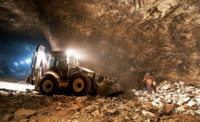It's National Heat Stroke Prevention Day

Today is National Heatstroke Prevention Day (July 31st), a good time to focus attention on precautions that should be taken against extreme heat and humidity.
Employees who are new to outdoor work at at greatest risk for heat-related illnesses. Cal/OSHA found that of 25 incidents of heat-related illness they investigated, almost half of the cases involved a worker on their first day of work. It’s also important to slowly increase the workload for new workers and workers who may be returning to a job after time off, building up tolerance slowly and safely to hot conditions.
Scott Humphrey, Second Vice President of Risk Control at Travelers, offers the following tips for avoiding heat-related illness:
- Preventative measures companies with employees working outside can take to help keep employees safe include:
- Acclimatizing workers over 4-7 days to help them become more resilient to heat;
- Providing workers with a supply of water and shade;
- Provide workers with personal protective clothing to help combat the heat (light-colored clothing, air-cooled or water-cooled garments, wetted headbands, etc.)
- Increasing rest periods for workers throughout the day;
- Rotating workers in high-exposure positions;
- Scheduling hot work for cooler periods of the day; and
- Monitoring work environments for heat and making necessary adjustments, including fans or shields and barriers.
- Warning signs to look for:
- Signs of heat exhaustion include dizziness, weakness, headache, blurred vision, nausea and staggering.
- Signs of heat stroke can include a red face, hot and dry skin, no sweating and a strong, very fast pulse.
- If you see someone exhibiting symptoms of heat exhaustion:
- Have them go to a shady location or room with air conditioning.
- Encourage them to lie down and stay calm.
- Have them take frequent small sips of cool water or sports drink.
- The hot temperatures are also a concern for indoor workers. Most indoor factories, warehouses are not air conditioned and can become very hot. A lot of jobs involve strenuous labor or working around machinery that generates heat which adds to the already elevated summer temperatures. It’s important that any employer who has workers in extreme heat conditions – both indoors and outdoors – takes the precautions necessary to help prevent heat-related illnesses.
Source: Travelers
Looking for a reprint of this article?
From high-res PDFs to custom plaques, order your copy today!





